The 4th International Symposium on Primatology and Wildlife Science
(PWS Interim Symposium): Toward the Asian Federation for Primatology
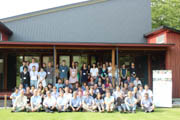

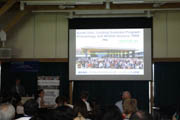

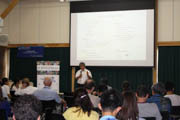
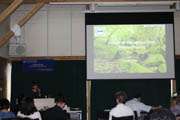
10-minute walk from Hyakumanben stop. For more information about access to Hyakumanben stop, see our visual guide.
Session 1 : JSPS Core-to-Core Program "Research of Wild chimpanzees in Africa" (1)
Chair: Michio NAKAMURA / July 21 (Tue) 10:10- 12:10
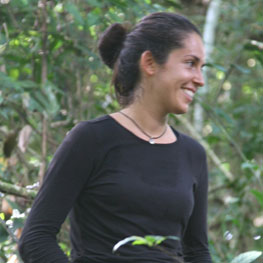
Chimpanzee feeding behaviour and resource competition with local people at Caiquene-Cadique, Guinea-Bissau
Kimberley Jane Hockingsa,b,c and Claudia Sousaa,b †a Centre for Research in Anthropology (CRIA-FCSH/UNL), Portugal.
b Department of Anthropology, Faculdade de Ciencias Sociais e Humanas, Universidade Nova de Lisboa, Portugal
c Anthropology Centre for Conservation, Environment and Development, Oxford Brookes University, UK
† Passed away September 29th 2014
We are in a new epoch, the Anthropocene, and research into nonhuman great ape behaviour must keep pace with the speed at which our species is driving global change. The ways in which great apes modify their feeding strategies in response to human pressures (such as agriculture and forest resource exploitation) is important to assess their ability to cope with changing conditions and to evaluate the potential sustainability of resource competition with humans. Using a case study of chimpanzees (Pan troglodytes verus) inhabiting a forest-savannah-mangrove-agricultural mosaic at Caiquene-Cadique, Guinea-Bissau, we provide cross-disciplinary data on human and chimpanzee use of wild and cultivated plants, and discuss the sustainability of resource competition with local people. To ensure that diverse ape populations survive the Anthropocene requires finding ways for humans and apes to coexist and utilise shared resources in shared landscapes.

University of St Andrews, United Kingdom
Gestural communication in the Budongo chimpanzees.
The Budongo forest is located in north-west Uganda, high on the Albertine Rift escarpment above Lake Albert. It comprises around 435km2 of dense rain-forest with a rich diversity of flora and fauna including: two species of prosimian, four monkey species, and one great ape, Pan troglodytes schweinfurthii. The behaviour of the Budongo chimpanzees was first investigated in 1962 at around the same time as research was starting in the near-by Tanzanian sites of Gombe and Mahale; however, political instability in Uganda prevented the establishment of long-term research. In the late 1980s Professor Vernon Reynolds returned to Budongo and, finding that the forest and its wildlife were in urgent need of conservation, in 1990 he started the habituation of the Sonso chimpanzee community and established a permanent field-station. Now, 25-years later we have been able to accumulate a wealth of knowledge about the behaviour and ecology of these chimpanzees. Once a rich source of mahogany, today the forest is predominantly secondary growth with a particularly high density of ficus species that supports a large population of chimpanzees. Recent research on Sonso chimpanzee behaviour has focused on their social communication and their unusual repertoire of tool use, which seems to be restricted to leaves.
Research methods include long-term observational studies, in combination with innovative field-experiments incorporating vocal play-back and predator models. My own work has focused on the use of their gestural communication. The first long-term systematic study of gesture in the wild has allowed us to demonstrate that they offer chimpanzees a rich and flexible way to communicate specific goals in an intentional manner. We are now looking at how these gestures are integrated within the complete system of communication that includes vocalization and facial expression; as well as comparing gesture use with that in other communities.
An exciting new development of the chimpanzee research in Budongo is the study of the two neighbouring communities of Waibira and Kamira. In Kamira we are employing remote monitoring and surveying methods such as camera-traps. In Waibira we have habituated the chimpanzees to direct observation and are now able to address new questions such as intercommunity social interactions, and the study of female behaviour during immigration. As well as long-term behavioural studies work in Budongo has also focused on conservation - with the chimpanzees acting as a crucial flag-ship species. A particular challenge is the widespread use of hunting snares that, while not intended for the chimpanzees, frequently trap and maim. Here work focuses on community education and the provision of alternative resources.

Muséum national d’histoire naturelle, PARIS, FRANCE
Humas as neighbours : behavioral and health consequences for wild chimpanzees in Sebitoli, Uganda
In a rapidly changing landscape highly impacted by anthropogenic activities, the great apes are facing new challenges to coexist with humans. We hypothesized that behavioural adjustments may occur in wild chimpanzees inhabiting encroached territories. We observed wild chimpanzees in Sebitoli site, in the Northern part of Kibale national park, in Uganda. Their home range is a fragmented habitat, partly in regeneration, surrounded by tea and eucalyptus plantations, as well as gardens. Inside the forest, an asphalted highway cuts through the park and their territory. Chimpanzees demonstrated behaviors attesting they took into account risky situations. They prevent the risk of detection by human guarding their field by engaging in nocturnal cropraiding. Before crossing the road, they look both sides and check on vulnerable conspecific while crossing. However, if habitat destruction may have promoted behavioural adjustments, at least 10% of the Sebitoli chimpanzee community present a characteristic facial phenotype with flattened nose, reduced nostrils and concave mid-face. In addition to this facial dysplasia, some chimpanzees suffer of other congenital anomalies, such as cleft lip, patches of depigmented hairs and limb defects. The possibility that environmental pollution from pesticides used in neighbouring plantation contribute to their etiology is currently under investigation. Such threats to wildlife life induced by human activities have to be considered and efforts should be deployed to reduced them in the future.

Laboratoire de Primatologie, Centre de Recherche en Sciences Naturelles, RD Congo
Potential suitable field station for long-term primate research and conservation activities on Idjwi Island, Eastern Democratic Republic of Congo
The Democratic Republic of Congo (DRC) is the first inland African country with the most non-human primate species, counting more than sixty-five different known taxa. It is the forth richest country worldwide in non-human primate species diversity behind Brazil, Madagascar and Indonesia. Despite its well acknowledged richness in primate species, the country has a very limited number of professional Congolese primatologists. Likewise, there is no country-based professional institution solely dedicated to primate research and conservation. In an attempt to fill this gap, we established the Primate Expertise (PEx), a country based organization dedicated to primate research and conservation. Primate Expertise aims to inspire young generation of Congolese primatologists to take the leadership in research and conservation to ensure long-term survival of the rich primate biodiversity of the Democratic Republic of Congo. To achieve this ultimate goal, PEx has recently carried out a scope survey on Idjwi Island to identify a suitable field station including an emblematic key primate species and establish long-term research and conservation activities. Located in Lake Kivu, Eastern of the Democratic Republic of Congo, Idjwi is the second largest island (310 sq. km) of the inland African continent. It is home to several endemic species, including the endangered blue monkey subspecies (Cercopithesus mitis schoutedeni). Population of blue monkey inhabiting Idjwi Island (known to belong to Schoutedeni subspecies) may have separated from other Cercopithecus mitis groups of the mainland around 20,000 years ago during the formation of Lake Kivu and has therefore evolved separately on this island. Due to the large scale deforestation happening on Idjwi Island, it was once believed that this endemic subspecies was possibly extinct (John Hart, 2008). During my last trip at Idjwi, I observed a small population of blue monkey (c.a. 50 individuals) living in a tiny forest fragment. There is still a number of such small remnant fragmented forests on the Island where presence of blue monkey has been confirmed. Effort should be made to restore a viable population of Cercopithecus mitis schoutedeni on the island. To achieve this, there is a need to analyse ongoing threats to the long-term survival of Cercopithecus mitis schoutedeni and develop recommendations to halt all activities that negatively impact the primate population. This has to be done in collaboration with the local community. Through a participatory stakeholders’ consultation, PEx facilitated to establish a local-based conservation initiative willing to support primate research and conservation programs at Idjwi Island
Session 2 : JSPS Core-to-Core Program "Research of Wild chimpanzees in Africa" (2)
Chair: Satoshi HIRATA / July 21 (Tue) 13:30-15:00

University of Cambridge, United Kingdom
Chasing After Chimpanzees
The scientific study of wild chimpanzees is now in its second half-century, and accordingly some stocktaking may be in order. Reviewing decades of work published in thousands of papers and hundreds of books on Pan troglodytes is a daunting task. Here I will focus on ethology and ecology, especially as practiced by the pioneering generation, but carried on by their descendants, from East and West. There is variation to be explained, such as asking why researchers from North America came mostly from anthropology, from Europe mostly from zoology, from United Kingdom mostly from psychology, and from Japan from all three. Technological progress has been immensely enabling: consider compass, aerial photographs, aerogrammes, and calculators versus GPS, satellite imagery, email, and personal computers! Key figures and field sites have provided visionary leadership and varied opportunities, and their influence persists. I will attempt to chart the progress of ‘chimpology’ using an analogy to the development of anthropology, through successive stages of natural history, ethnography, and ethnology. The first was a period of exploratory description, anecdote, and not a little serendipity; the second comprised systematic and comparative observation, field experimentation, and quantitative rigor; the third moved on to theory-driven and focussed probing, hypothesis testing, and modelling and sophisticated statistical analyses. I will try to give telling but admittedly selective examples of all of these. Finally, I will conclude with an assessment of the current state of play, such as the emergence of primate archaeology, and suggest some topics for future study, such as the use of new technology to revisit basic problems, such as next-generation sequencing to tackle dietary niches. Thus, there will be some old wine in new bottles, and some new wine in old bottles.Session 5 : Toward Asian Federation for Primatology
Chair: Ikuma ADACHI / July 22 (Wed) 10:00- 12:30

Director of the National Primate Research Center of Thailand, Chulalongkorn University, Thailand
Research diversity on primate diversity in Thailand
Thailand has high diversity of primate species from prosimians to small apes. At present, at least 16 species of primates have been reported; Sunda slow loris (Nycticebus coucang), Bengal slow loris (N. bengalensis), banded leaf-monkey (Presbytis femoralis), dusky langur (Trachypithecus obscurus), slivered langur (T. cristatus), Phayre’s langur (T. phayrei), long-tailed macaque (Macaca fascicularis), rhesus macaque (M. mulatta), Assamese macaque (M. assamensis), stump-tailed macaque (M. arctoides), northern pig-tailed macaque (M. leonina), southern pig-tailed macaque (M. nemestrina), agile gibbon (Hylobates agilis), pileated gibbon (H. pileatus), white-handed gibbon (H. lar), and siamang (Symphalangus syndactylus). This high species diversity is due to the geographic position and geography of Thailand that connects Asian continent with insular SE Asia. Thailand is also borders of range between many sister species of primates, for example, Sunda and Bengal slow loris, rhesus and long-tailed macaque, northern and southern pig-tailed macaque, and pileated and white-handed gibbon. The hybrids between the different species have thus been widely assessed. Many fossil primates from variety of geological times and taxa such as Krabia minuta and Siamopitheucs from Eocene to Khoratopithecus or Tarsius from Miocene were also unearthed. Because of economic development, logging and land-conversion, primates’ habitats have been converted to agricultural field and human settlements and the co-existing between primates and humans occur in many locations in Thailand. Interaction between humans and non-human primates, especially human-macaque conflicts, becomes severely. Although research on primates in Thailand is focusing mainly on macaques and gibbons, it covers diverse fields of study: population census and genetics, phylogeography, morphology, physiology, reproductive endocrinology, ecology, socioecology, conservation biology and population control, human-macaque conflict, hybrids, locomotion, and social interactions. Tool using behaviors of long-tailed macaques which have been discovered in Thailand in a past decade also become a focal point of interest for researchers from various fields. Although very few Thai primatologists are counted and vast majority of primate researches are in collaboration with researchers from abroad such as Singapore, Japan, USA, Germany, and UK, the primate research and number of primatologist in Thailand are growing and advancing.
Bogor Agricultural University, Indonesia
Competitive exclusion principle reduces earthworm biodiversity
Competitive exclusion principle where complete competitors cannot coexist leads to reduced biodiversity and less energy flux in a community. Conceived by Lotka, Voltera and Gause in early 1900s and later called Gause’s Principle, however, this important ecological principle had only been proven in laboratory. In addition, recently it had been shown that the underlying resource competition mechanism results in the coexistence of functionally equivalent species in estuarine ecosystem of phytoplankton. Here we show that the anthropogenic disturbance of natural habitats decreases biodiversity by constraining the availability of resources to make the competing species excluding each other. At the same time, the most frequent land-use change of deforestation into agricultural area brings the opportunist exotic species to fill the leftover niche in support for the exclusion principle. Indonesia experienced the world’s second largest annual forest area net loss in 1990–2000 and the third in 2000–2010. The forest of Mount Gede in West Java is undergoing land-use change into mixed and homogenous plantations, and consequently decreasing their soil organic matter. We presumed that this process enhances the conversion of ‘limitless’ into limited resources and this constraint lowers earthworm abundance and their cocoon density. When the earthworms are incapable of adapting the environmental change, they might expel each other out and the niche left is filled by the species that have better tolerance, most probably the exotic ones. It is predicted that the extent of deforestation into mixed and homogenous plantations reduces biodiversity of the earthworm communities. We identified five native Oriental (Drawida nepalensis, Notoscolex javanica, Pheretima pura-group, Polypheretima moelleri, and Polypheretima sempolensis) and eighteen exotic earthworms (including Ocnerodrilus occidentalis and Pontoscolex corethrurus) in Mount Gede. The changing land-use from forest to mixed and homogenous plantations was found, as predicted, to decrease biodiversity shown by the lowering trend of Shannon’s diversity index. It left N. javanica out as the only native which survived the deforestation, while exotics O. occidentalis and P. corethrurus thrive to be the eudominant species.
Sun Yat-sen University, China
Good gibbons and evil macaques - A historical review on cognitive features of non-human primates in Chinese traditional culture
Ancient Chinese has accumulated rich knowledge on non-human primates that are widely distributed in China with written literature and folklore for several thousand years. I used the method of critical text analysis and discourse analysis to make clear when and how ancient Chinese distinguished gibbons from macaques. I divided the progress into four main stages, which include Pre-Shang to Shang Dynasty (before 1046 B.C.), Zhou to Han Dynasty (1046 B.C. — 220 A.D.), Six Dynasties to Song Dynasty (220 — 1279 A.D.) and Yuan to Qing Dynasties (1279 — 1840 A.D.). I found that China's traditional cognition of gibbons and macaques emphasized the appearance of animals, organoleptic performance or even whether their behaviors were 'moral' or not. They described them as human-like animals by ethical standards but ignored the species itself. This kind of cognitive style actually embodies the 'pursuit of goodness', which is the feature of Chinese traditional culture. This study presents some original views on Chinese traditional knowledge of non-human primates.
Keywords: Chinese traditional culture, Non-human primates, Gibbon, Macaque, Cognitive feature
Department of Sociology and Anthropology, University of Sri Jayewardenepura, Sri Lanka
Primatological Research in Sri Lanka: past, present and future prospects
Sri Lanka is home to five species of primates, the toque macaque (Macaca sinica), purple face langur (Semnopithecus vetulus), grey langur (Semnopithecus priam) and two species of slow loris (Loris tardigradus, L. lydekkerianus). The toque macaque, purple face langur and one species of slender loris (L. tardigradus) are endemic. In 2013, the Horton Plains slender loris, feared to be extinct, was sighted after 75 years. The country’s diverse ecology, climate and geography provide Sri Lanka with a high degree of biodiversity in flora and fauna. The primates are no exception, with multiple sub-species described for each of the species listed above.
While detailed records of the country’s primates date back to as early as the chronicles of Robert Knox around 1681, modern primatogical research began in the 1970’s with the pioneering work of western scientists like Wolfgang Dittus, who has focused his long-term research at the archeological site of Polonnaruwa in the North-Central Province, a low elevation woodland forest in the dry zone. The majority of what is known about the behavior and ecology of this species, distributed widely across the island, is based on the efforts from this one site. A few studies have also been conducted on the purple face langur and slender loris. Despite the relatively long history of primate studies in Sri Lanka, only four professional Sri Lankan primatologists are conducting research in the country, and the subject primatology is offered only at the University of Sri Jayewardenepura under Biological Anthropology.
Since 2004, in collaboration with Kyoto University faculty, Michael A Huffman and Yoshi Kawamoto, we have been conducting multidisciplinary research on the macaque and langur species at sites across the island representative of their entire natural distribution. The topics we are investigating include fossil remains, morphology, phylogeography, parasitology, ethnoprimatology and human primate conflict. Current information about the nature and diversity of these primates and their interactions with humans across the country is limited; focusing to date largely on few locations.
Some of our current and future projects include, research on phylogeography of purple-faced leaf langur and gray langur, human primate conflict in agricultural areas, examination of primates bones excavated from prehistorical cave sites and to begin research on simian malaria and primate zoonosis studies. Several undergraduates and our first Masters student are conducting fieldwork at locations across the country.

Malaysia Science University, Malaysia
Spatial Distribution of Malaysian Primates
Based on ecological spatial distribution on 13 states (q-mode) in Malaysia and 13 main primate species (r-mode), several results can be drawn. The two most dominant species are Long Tailed Macaque (Macaca fascicularis) and Southern Pig Tailed Macaque (Macaca nemestrina). Both species are recorded in all 13 states in Malaysia. Apparently the high populations of Long Tailed Macaca, in some parts, they are considered as pest. Dusky Leaf Monkey (Trachypithecus obscures) found at 11 states in Peninsular Malaysia, but not in Sarawak and Sabah. Silvery Lutung (Trachypithecus cristatus) wild populations are recorded at 7 states in Malaysia. The species are not found in the East Coast States of Peninsular Malaysia. Siamang (Symphalangus syndactylus) and White Handed Gibbon (Hylobates lar). Siamang wild populations are recorded in 6 states, namely Perak, Selangor, Negri Sembilan, Malacca, Pahang and Terengganu. While White-Handed Gibbon populations are recorded in Perak, Selangor, Negri Sembilan, Malacca and Johor. White-Thighed Surili (Presbystis siamensis) wild populations are recorded at four states in Peninsular Malaysia. Agile Gibbon (Hylobates agilis) wild populations are recorded in 3 northern states of Peninsula Malaysia. Red Leaf Monkey (Presbytis rubicund) and Proboscis Monkey (Nasalis larvatus) are recorded only in Sarawak and Sabah. Sarawak Orangutan (Pongo pygmaeus var. pygmaeus) is only found in Sarawak, while Sabah Orangutan (Pongo pygmaeus var. morio) is recorded only in Sabah. According to the IUCN Red List, both Orangutan populations in Sarawak and Sabah are included in endangered list. In addition Siamang wild populations are also in the endangered list. Perhaps the main culprits for most these arboreal primates are habitat loss due to oil palm plantations, illegal loggings, encroachment and human developments.
Session 6 : Research introduction by PWS members
Chair: Takushi KISHIDA
/ July 22 (Wed) 13:30- 15:00

Graduate School of Letters, Kyoto University
How do primates respond to unfairness between third parties?
Developmental psychologists are interested in how children develop an understanding of reciprocity in social exchanges and fairness in resource distribution, including social exchanges between third parties. There are few studies of whether nonhuman primates detect reciprocity and violations of reciprocity between third parties. We found that capuchin monkeys discriminate between humans who reciprocate in an exchange of items with others and those who do not. Specifically, monkeys more readily accepted food from reciprocators than non-reciprocators or partial reciprocators. However, when exchange asymmetry was due to one partner starting out with fewer goods, the initially impoverished reciprocator was not discriminated against. When we tested squirrel monkeys in a similar situation, we again found a tendency to avoid accepting food from non-reciprocators, but also a simple preference for the individual who most recently donated items to another. This finding suggests that sensitivity to reciprocity and violations thereof may be based on different psychological mechanisms, with capuchin monkeys but not squirrel monkeys engaging in a form of emotional or affective bookkeeping.

The University of Edinburgh, United Kingdom
Fifty-Eight Items: A Universal Language to Assess Primate Personality and Happiness
Historically, a major barrier to carrying out large scale research on the personality and affect of animals has been variability in how researchers measure these characteristics. Complications may also arise when researchers compare species or when researchers come from different cultures. Starting in 1998, I began working with Jim King who had developed ways to measure chimpanzee personality and happiness. His approach was to adapt methods used to overcome these barriers by psychologists who study human behavior and affect. This approach involves using questionnaires. Until 2012, with collaborators at the Kyoto University Wildlife Research Center, the Kyoto University Primate Research Institute, and other institutions, my students and I focused on testing whether these measures are valid measures of behavior and affect, and whether they can be applied across different populations and species. Since then we have spent more time addressing more interesting questions. These have included questions about the development of personality and happiness, more questions about the genetics of personality and happiness, and the association of personality and happiness on longevity. Most recently we have examined the role of personality in the life histories of the wild chimpanzees living in Gombe National Park, a further examination of the genetics of personality, and links between personality and cognitive abilities. For my talk, I will first briefly describe these measures and the work we conducted up to 2012. I will then discuss our recent work on personality development in chimapnzees and orangutans, the genetics of chimpanzee personality, the association between personality and cognition, and how personality influences rank over the lifetime of wild chimpanzees. My talk will conclude with thoughts on how research using these measures may be used to help conservation efforts.

Wildlife Research Center, Kyoto University / Royal Zoological Society of Scotland, United Kingdom
Conservation Genomics - Applying the Latest DNA Analysis Methods to Wildlife Management
The application of molecular genetic data to wildlife conservation, known generally as Conservation Genetics, has been an established discipline for over 15 years. During the same period we have entered a new phase in the battle against the illegal wildlife trade, while threats to biodiversity through habitat destruction and over-exploitation continue to increase. How can DNA analysis be applied to address these issues? With the rapid uptake of genomic technologies by the conservation genetic community, are we in a better position to conserve wildlife, or simply to publish more papers?
This paper will focus on the applied uses of genomics in wildlife conservation and will examine whether or not these technologies are actually starting to provide novel data to conservation practitioners. Four short case studies will be presented, examining the use of genetic data across the conservation spectrum from captive management, reintroduction projects and wild population studies to law enforcement and wildlife forensics. Through these examples I hope to provide an overview of how conservation genetics is developing in the genomic era, but also to emphasize the importance of designing and implementing research projects that encompass solid experimental research and address a clearly defined conservation issue, in order to maximise the impact of conservation genetic science.
宿泊先の斡旋を開始いたしました。株式会社アートツーリスト社による特設ページ上で、ホテルと宿泊日数が選べ、クレジット決裁もしくは振込みにて決済がおこなえます。各ホテルとも数量限定・先着順ですので、ぜひお早めにお手配くださいますようお願い申し上げます。https://web-register.jp/psj2015
Please send the following informaiton to admin[at]wildlife-science.org.
(1) Full name
(2) Affiliation
(3) Position
(4) Email Address
(5) Date you will attend:
(6) Financial support:
If you have already registered for this conference using
the PSJ2015 registration form, there is no need to resend this
information.
参加を希望される方は、下記の情報を(できましたら英語表記にて)添えて、
admin[at]wildlife-science.org 宛てに参加登録をお願いします。
**第31回日本霊長類学会 ウェブサイトを通じて参加申し込みをされた方は、こちらのメールをお送りいただかなくて結構です**
(1) Full name
(2) Affiliation
(3) Position
(4) Email Address
(5) Date you will attend: July21st-22nd (ご予定に合わせてご変更ください)
(6) Financial support: Yes (ご都合に合わせご変更ください)
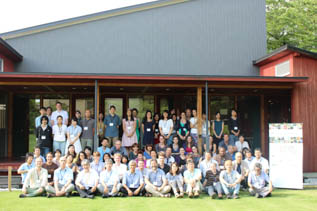
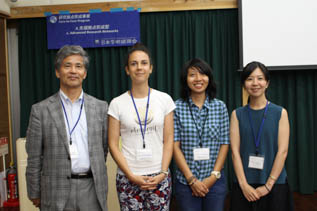
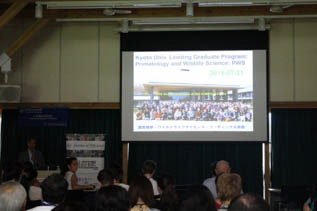
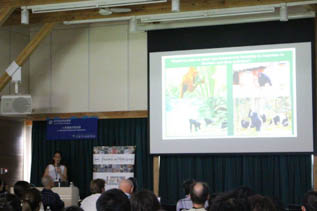

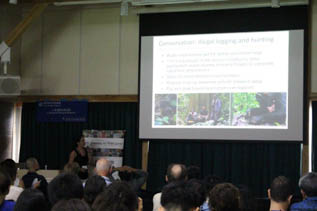
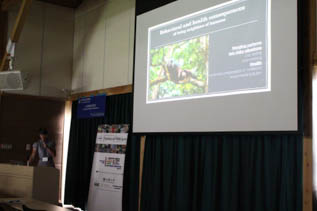
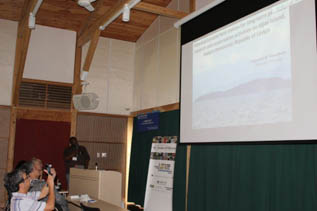
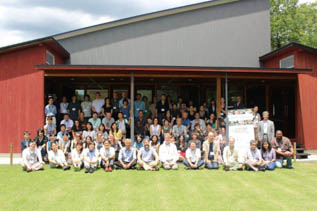
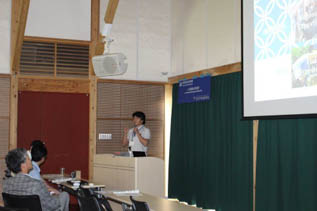
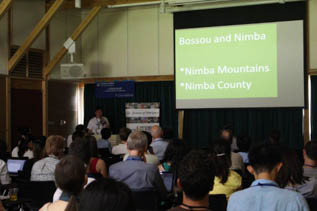
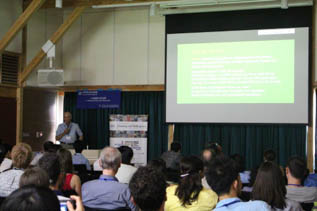
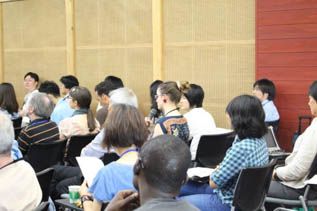
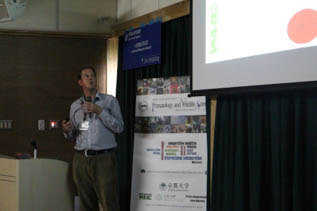
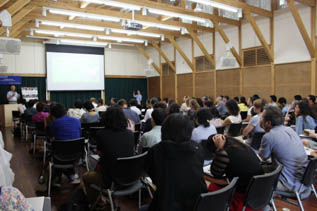
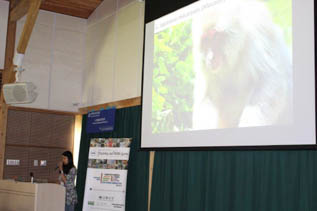
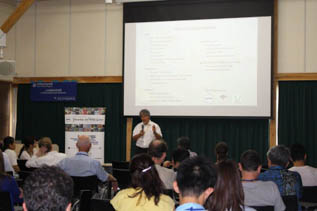
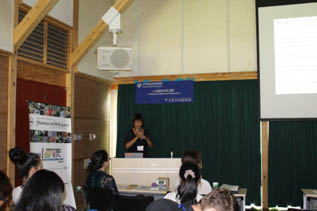
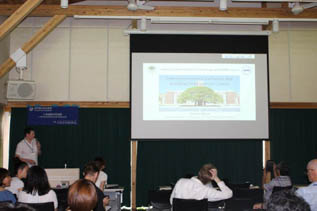
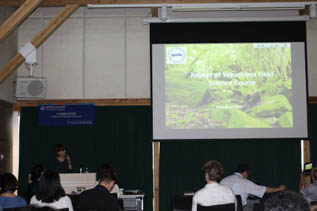
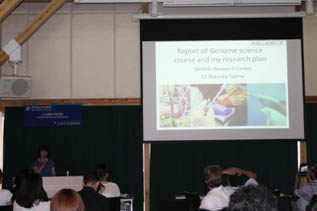
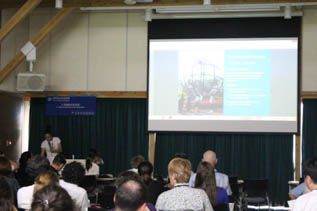
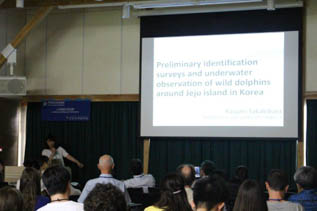
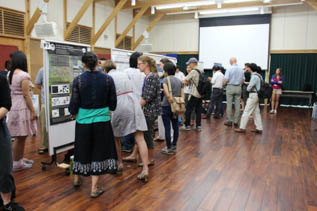
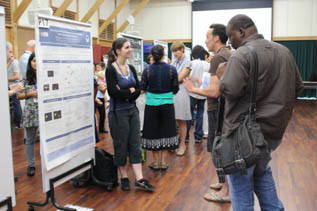
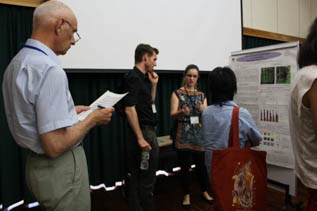
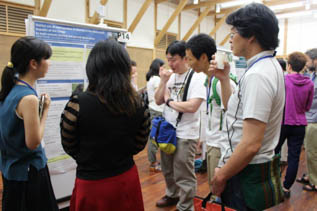
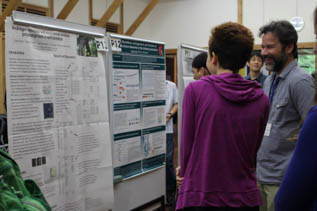
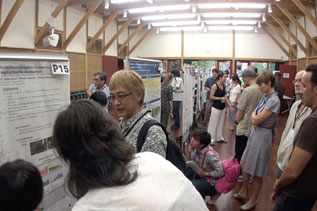
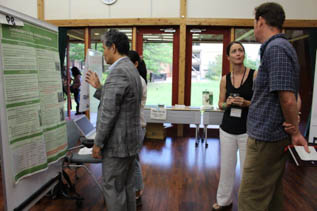

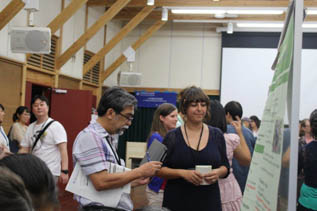
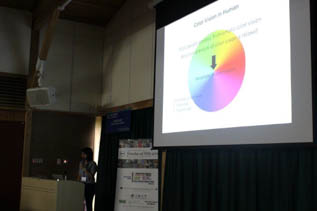
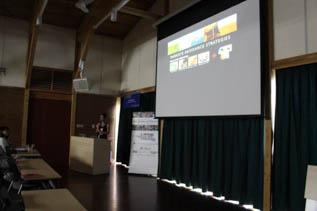
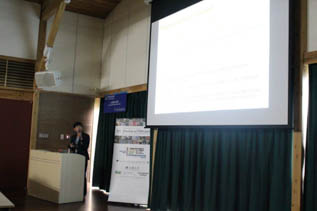
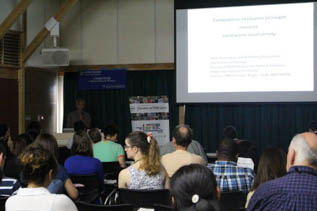
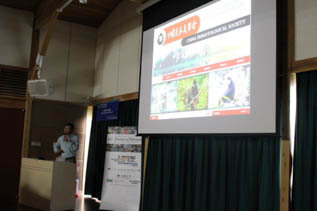
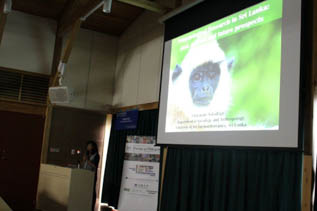
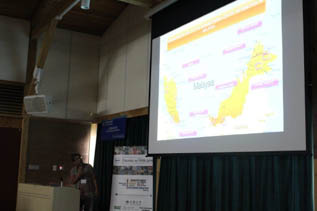
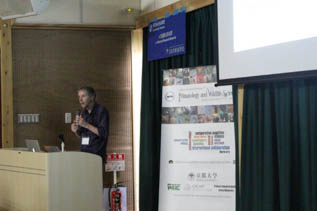
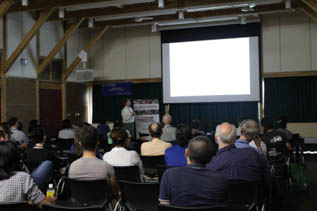


 Download MAP
Download MAP